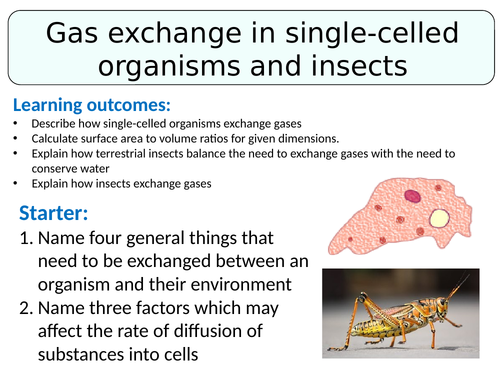

This lesson is designed for the NEW AQA AS-level Biology course, particularly the ‘Organisms & their Environment’ module.
For more lessons designed to meet specification points for the NEW AQA A-level Biology course please visit my shop: https://www.tes.com/teaching-resources/shop/SWiftScience
A-Level lesson format: I teach in more of a lecture style compared to GCSE. In the majority of my A-level lessons the beginning portion of the lesson is mainly teacher-led, where students are expected to take notes onto a handout/in their books. This is then mixed in with student-led activities, as well as questions and exam prep.
You will find some of my slides have blank spaces for you to add more detail/descriptions/explanations. If you look at the ‘Notes’ section underneath each of these slides, you will find additional content which you can add in as you teach!
This lesson begins by reminding students of the four general things that need to be exchanged between an organism and their environment and the three factors which may affect the rate of diffusion. This discussion leads into the first few slides which explain how an organism like an amoeba gets the substances it needs.
A worksheet is included for this lesson for students to complete as they take notes throughout.
An amoeba is used as an example of a unicellular organism, which is then compared to insects. The following slides explain the basic form and function of insects, then the process by which they exchange water and O2.
Students should take thorough notes on the spiracle, trachea and tracheoles in their books. The slides in this lesson are lecture based and very detailed, students will want to be sure they have a good understanding of the three ways that respiratory gasses move in and out of the tracheal system. The slides explain that gasses move along a diffusion gradient, through mass transport, and as the tracheoles fill with water.
A quick check of exam-style questions and mark scheme follows to help students assess their learning.
The plenary task is a true or false activity!
All resources are included. Thanks for looking, if you have any questions please let me know in the comments section and any feedback would be appreciated :)
Something went wrong, please try again later.
This resource hasn't been reviewed yet
To ensure quality for our reviews, only customers who have purchased this resource can review it
Report this resourceto let us know if it violates our terms and conditions.
Our customer service team will review your report and will be in touch.